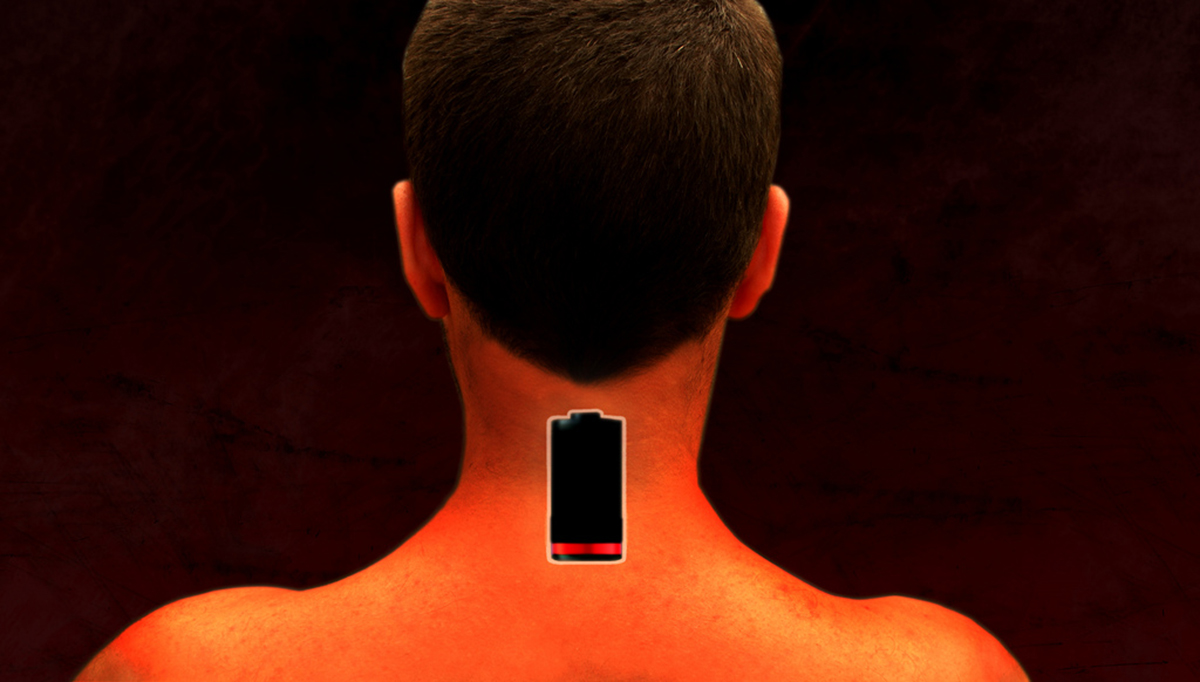Table of Contents
Low-level Aerobic Activity
You can tell that you’re doing too much of the first type, low-level activity like walking, if you’re always tired and hungry. If you find that even after you sleep well and eat the same amount as normal, you’re still feeling lethargic and you feel hungry but have no appetite, they’re signs of low blood sugar. Eating a nutrient-rich diet with sufficient calories should solve this. Given plenty of sleep and food, the body can be trained to tolerate this kind of exercise almost indefinitely — walking twenty miles a day isn't uncommon among elderly recreational hikers and ramblers.

Aerobic Activity
Mid-level activity — aerobic glycolytic activity — is another matter. This kind of training can be overdone fairly easily. Typically, you’ll find that in addition to feelings of fatigue, soreness and loss of appetite, you’ll begin to suffer from hormonal effects. Overdoing this type of training is a good way to interrupt or even halt your menstrual cycle if you’re a woman. Men tolerate excessive training like this only slightly better and the hormonal effects are equally severe, just less obvious; mood problems and headaches, joint soreness and stiffness, tendon pain and muscle soreness, declining cognition and degraded central nervous system performance are common symptoms of over-training in everyone.
The solution is to back off from this type of training, get plenty of rest and nutritious food and wait about six weeks for your metabolism to recover before beginning training again more carefully and at a volume you can actually tolerate.
Anaerobic Training
Anaerobic training is very easy to overdo. What prevents cases of anaerobic training being far more common is that most people actually don’t do any high-end anaerobic training. However, a recreational weightlifting program will be partly anaerobic and partly high-end aerobic, a dangerous area because you can sustain performance there long enough to hurt yourself. The first sign of anaerobic overtraining is that your ATP stores don’t get replenished and you simply can’t function in this region any more. For self-diagnosis, if your 2-5RM are falling or your sprint times are rising, you may be overtraining your ATP system. If your list of everyday symptoms include everything we’ve already talked about plus chronic headaches, nausea, loss of libido and depression you’re probably overtraining your ATP system. As before, the solution is to back away, move to gentle exercises like walking and eat plenty of nutritious food, and wait about four to eight weeks for your metabolism to recover before returning to intense training.
Loading And CNS
So far, we’ve talked about energy systems like they’re the only component of training. But that doesn’t make a lot of sense by itself. A 10-ton truck and a Lamborghini both work by burning petroleum, but they don’t have a whole lot else in common. Loading — the amount of work your muscles are doing, to move your body weight or an external weight - has a big effect on the danger of overtraining. Basically, the higher the load, the higher the stress on the relevant energy system and the more pressure on your central nervous system.
CNS Loading
Hands up if you can move stuff with your mind.
No? Wrong. Everything you move is with your mind in a sense. Your muscles are told to move by signals from your brain. No signal, no movement. People with spinal cord injuries lose muscle mass not because there’s anything wrong with their muscles but because signals from their brains can’t get through. The signals from your brain to your muscles are referred to as "neural drive", and the more neural drive there is the more force you can exert. Most of us can’t even use the muscle we do have, while people who train for strength are often able to contract more of the muscle they have, as well as having more muscle. They’re moving stuff with their minds.
But there’s a finite amount of CNS activity available. The more complex a movement is the more pressure it puts on your CNS. The more carefully timed it has to be, the more CNS pressure, and the faster it is, the more CNS pressure. So a movement like walking with a heavy load - even a very heavy load, like your body weight - is more tiring for your CNS than walking unladen. But putting that same weight overhead, in a movement like a snatch, is something even highly-trained professionals only do a handful of times in a workout because it’s too exhausting to the CNS.
Hacking Overtraining
For instance, if you’re overdoing mid-level aerobic training, you might want to back off from the volume you’re doing but do a session every ten days or so that’s intense enough to keep your CNS fired up. If you’re doing too much high-end ATP training you might want to maintain your strength by doing much easier movements that involve a heavy load, while orienting the majority of your training time to recovery until your symptoms abate.
See Also: How Often Do You Really Need to Exercise to Build New Muscle?
If you want to talk about the specific situation you’re in, or you think I’ve missed out something important, please get in touch with me in the comments section below and we’ll talk about it!
- Photo courtesy of Istolethetv via Flickr: www.flickr.com/photos/istolethetv/3483630555
- Photo courtesy of B Rosen via Flickr: www.flickr.com/photos/rosengrant/3787936766


Your thoughts on this